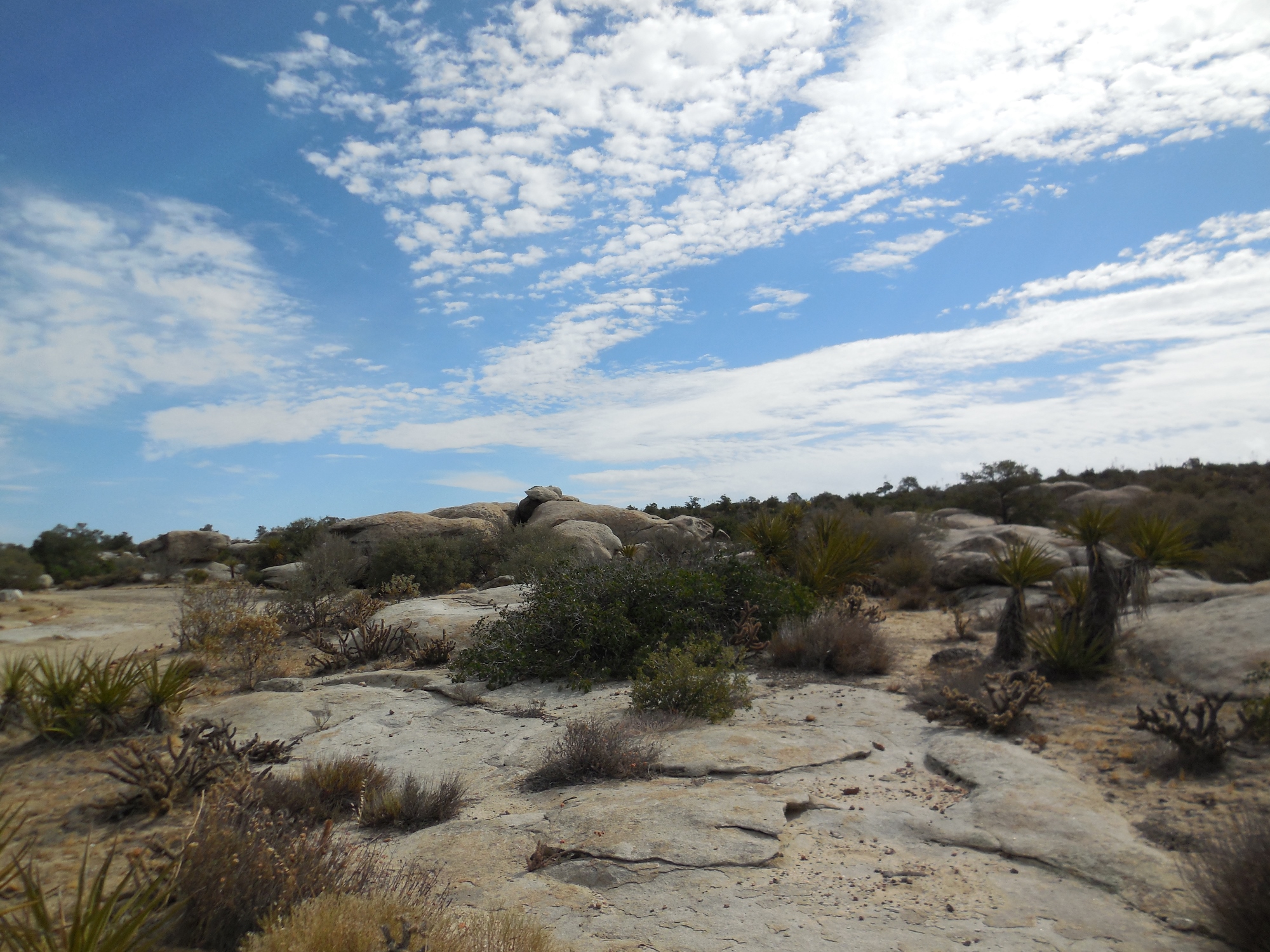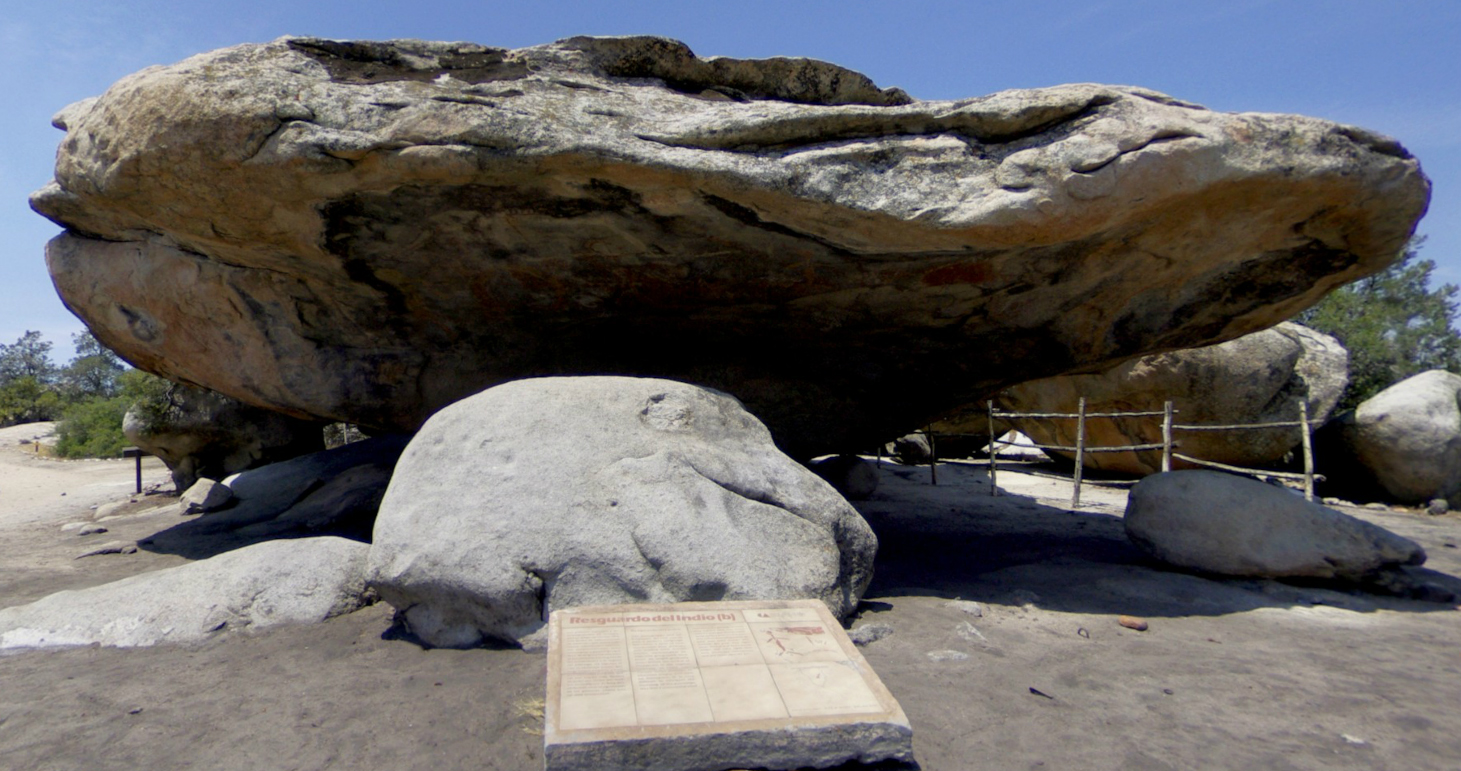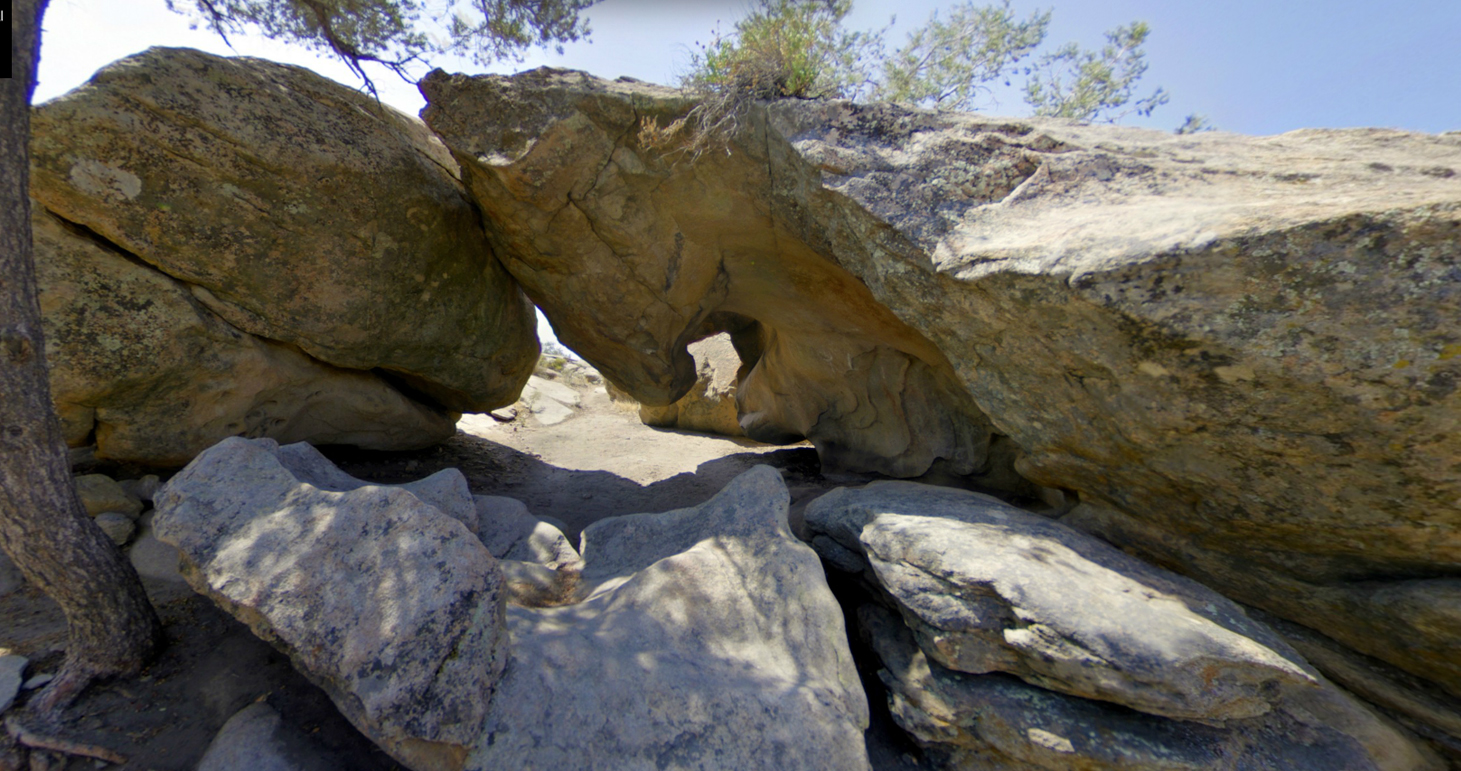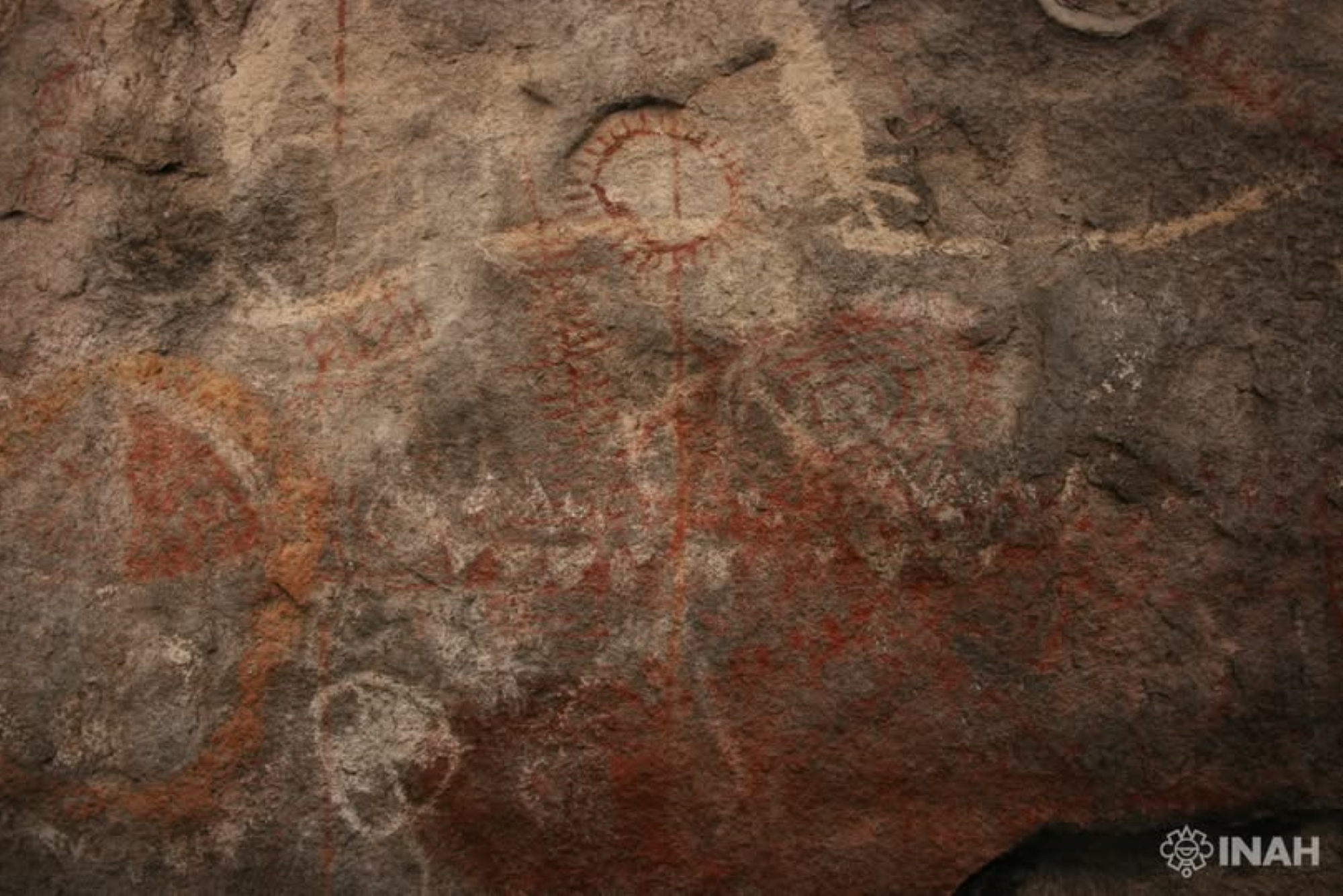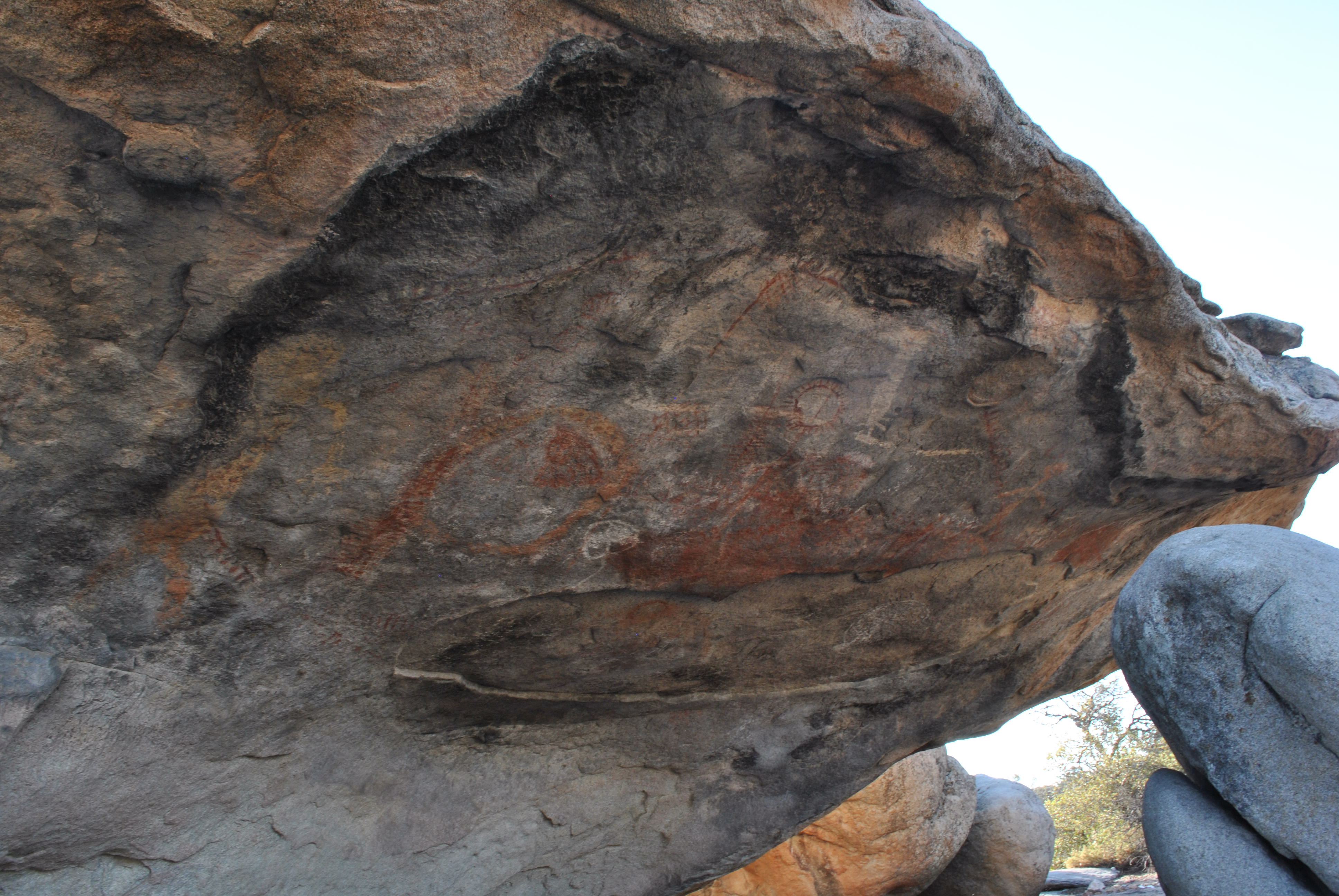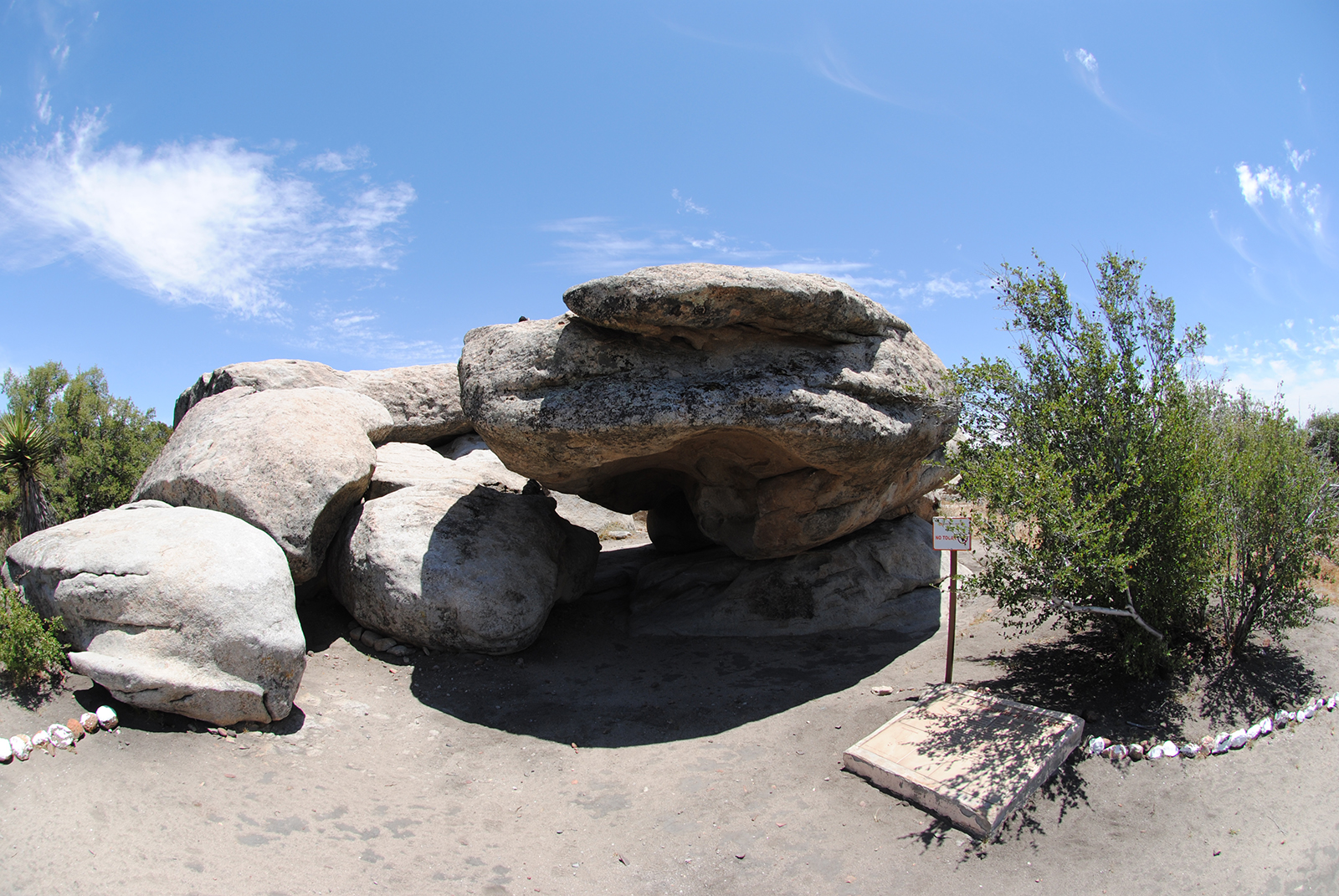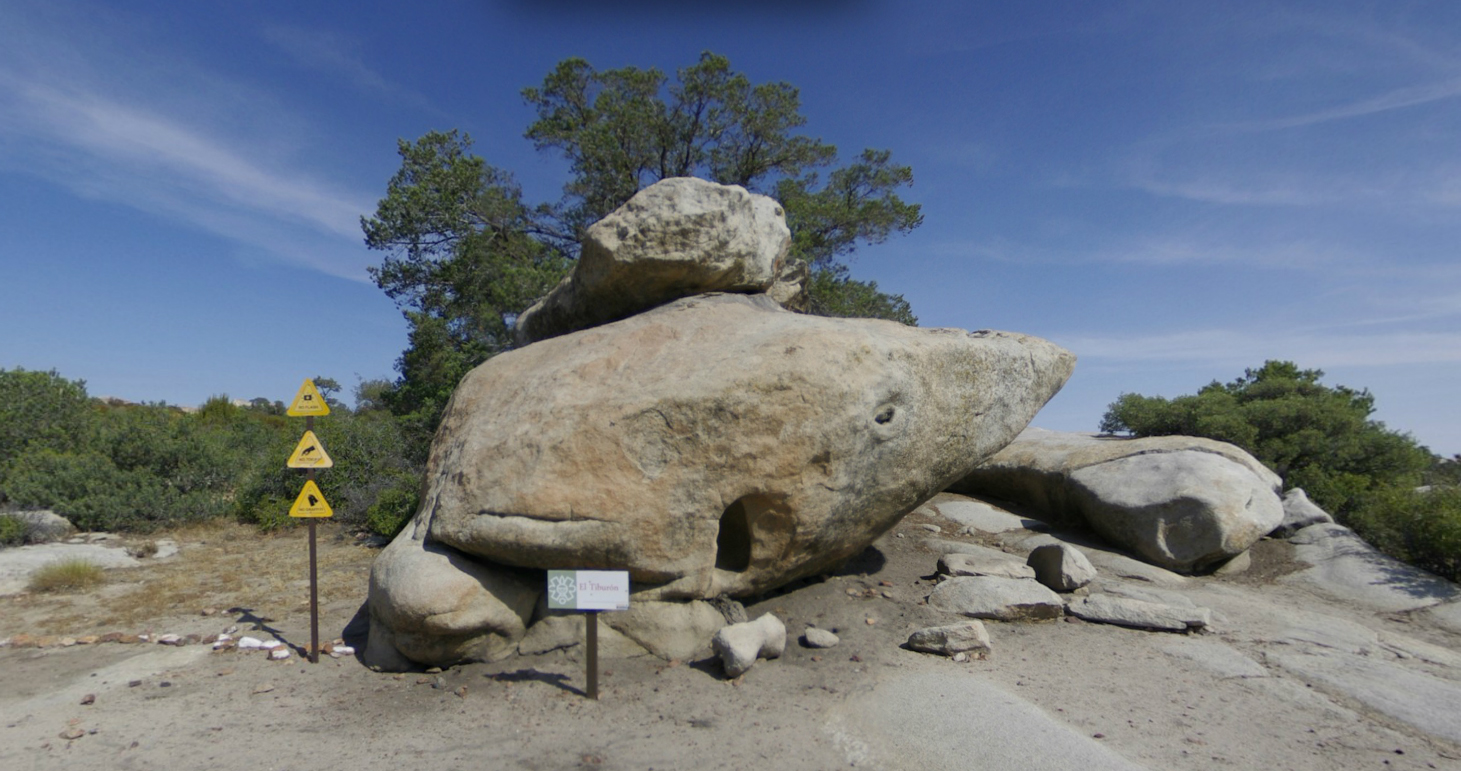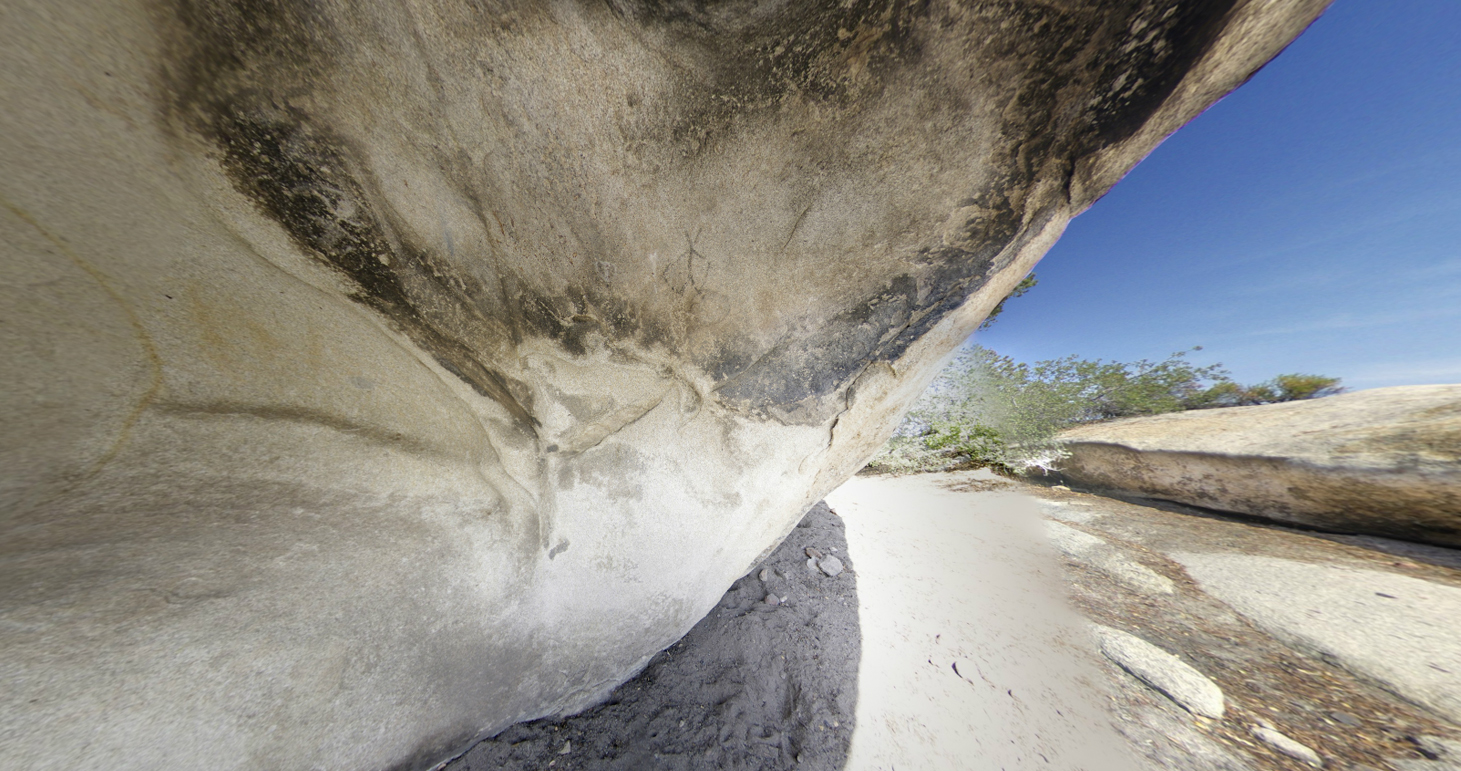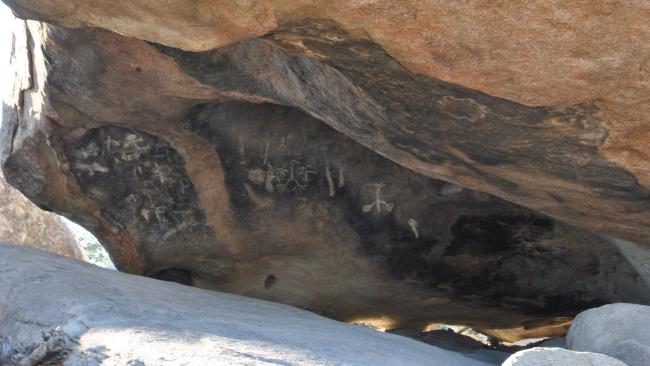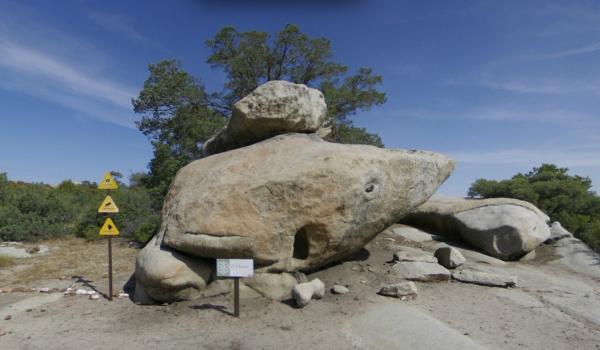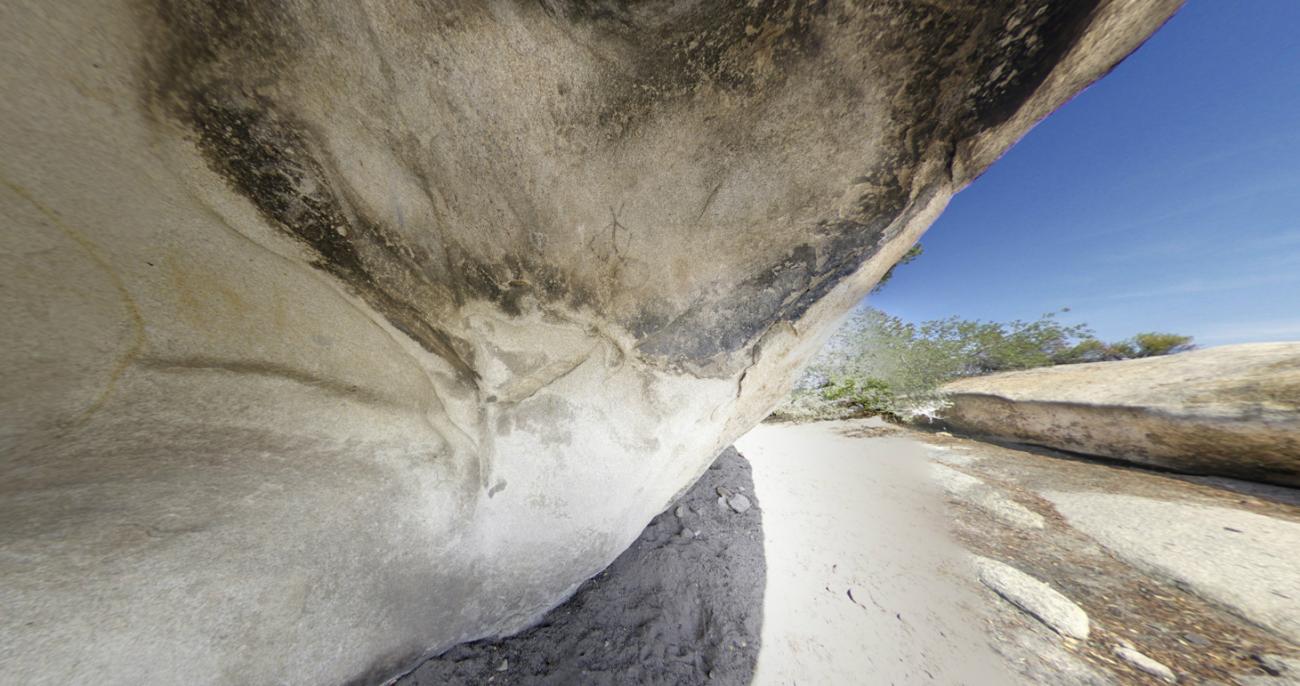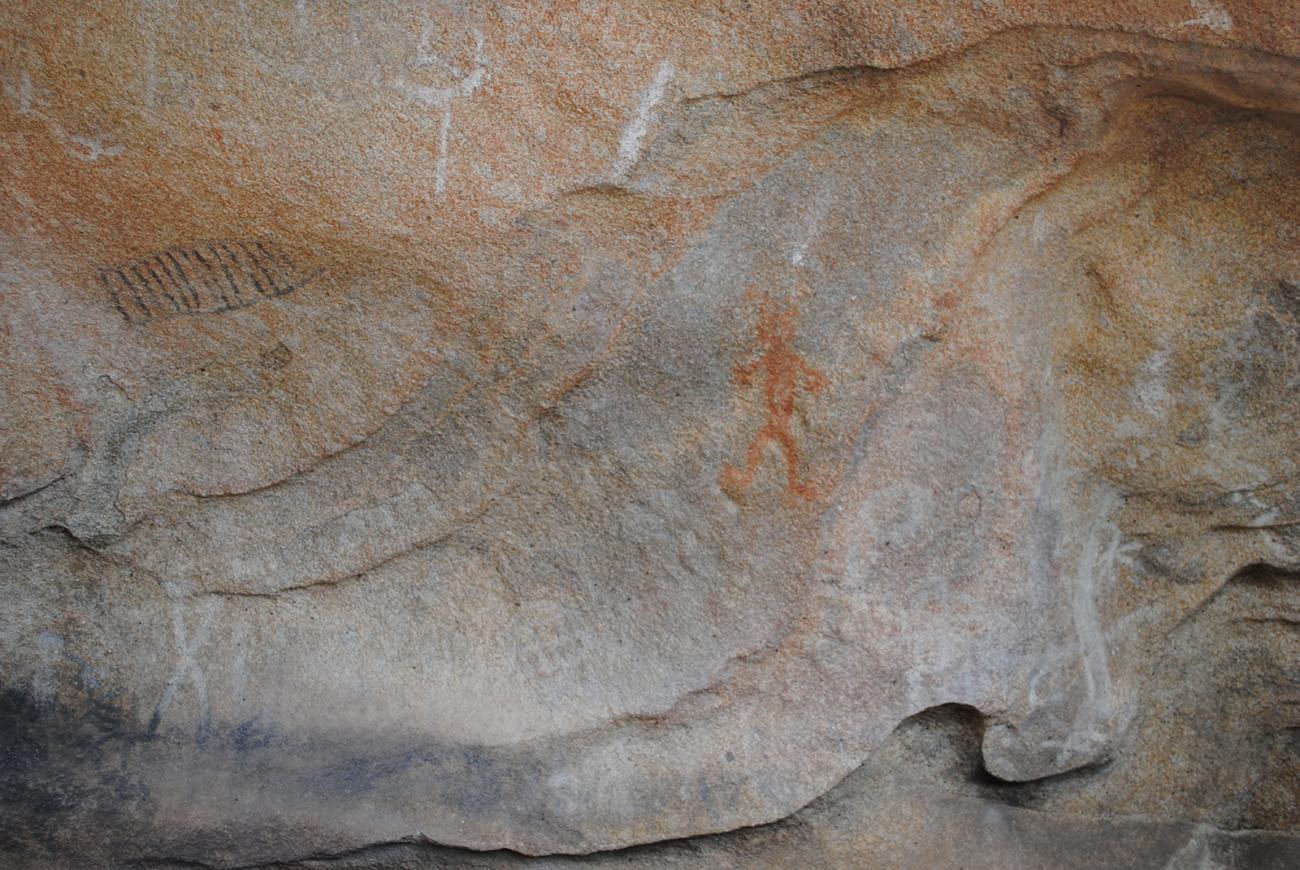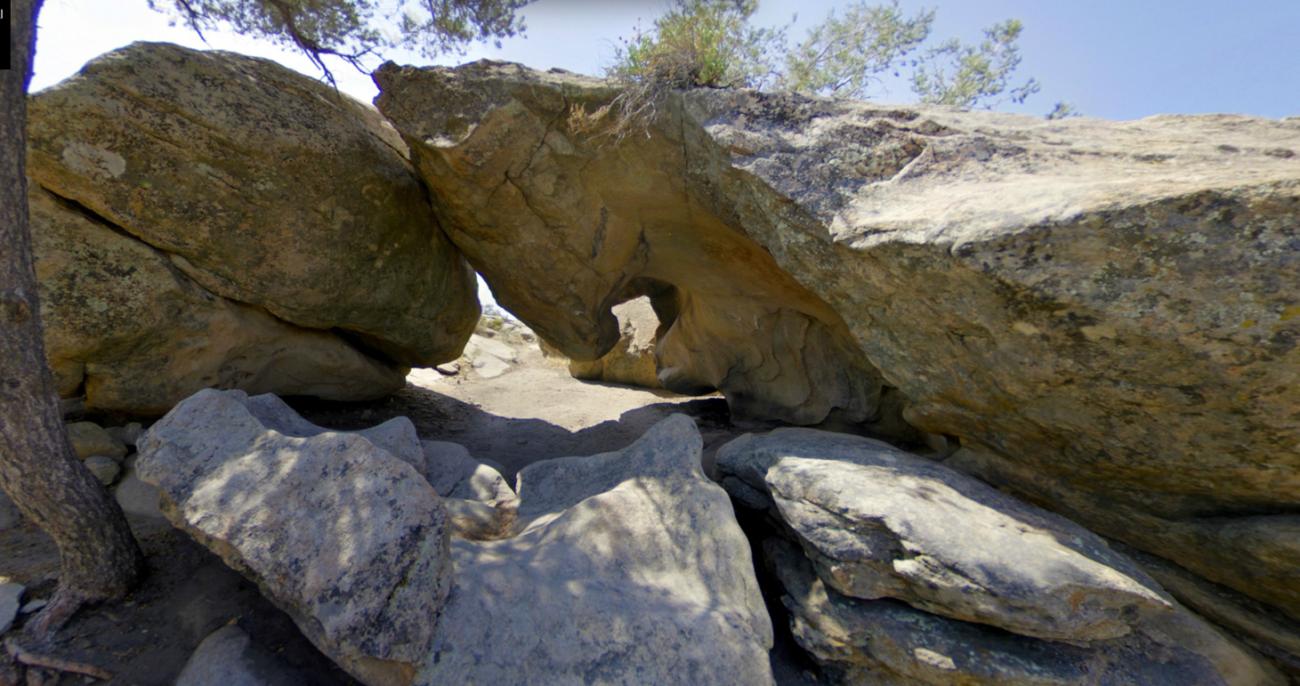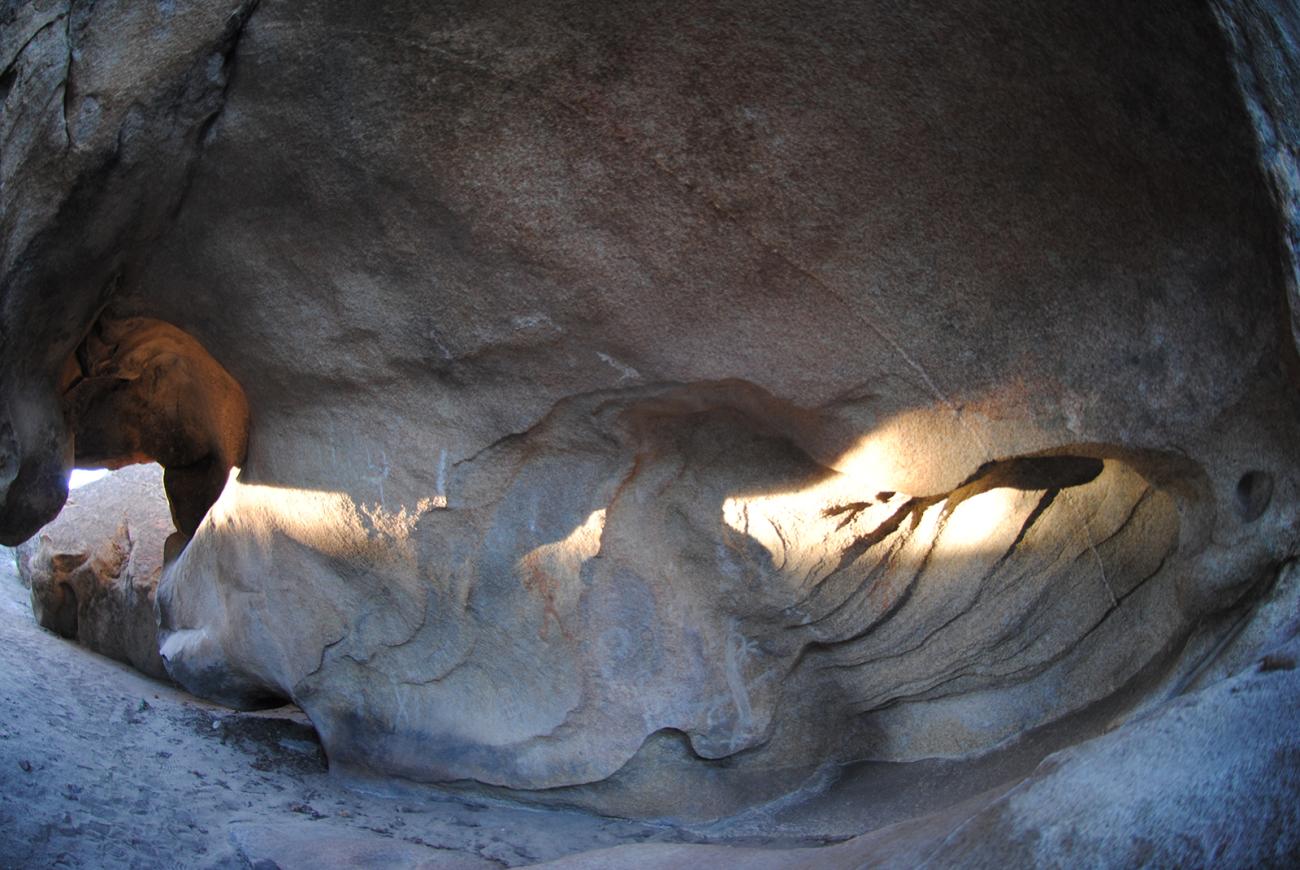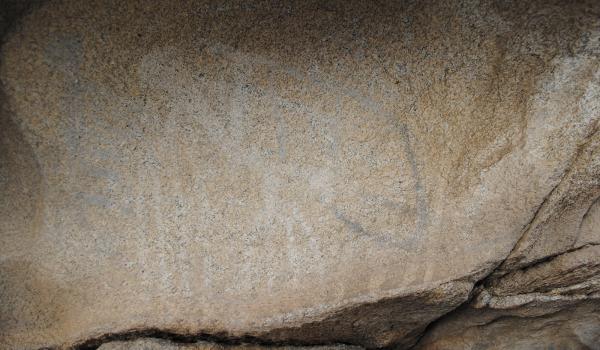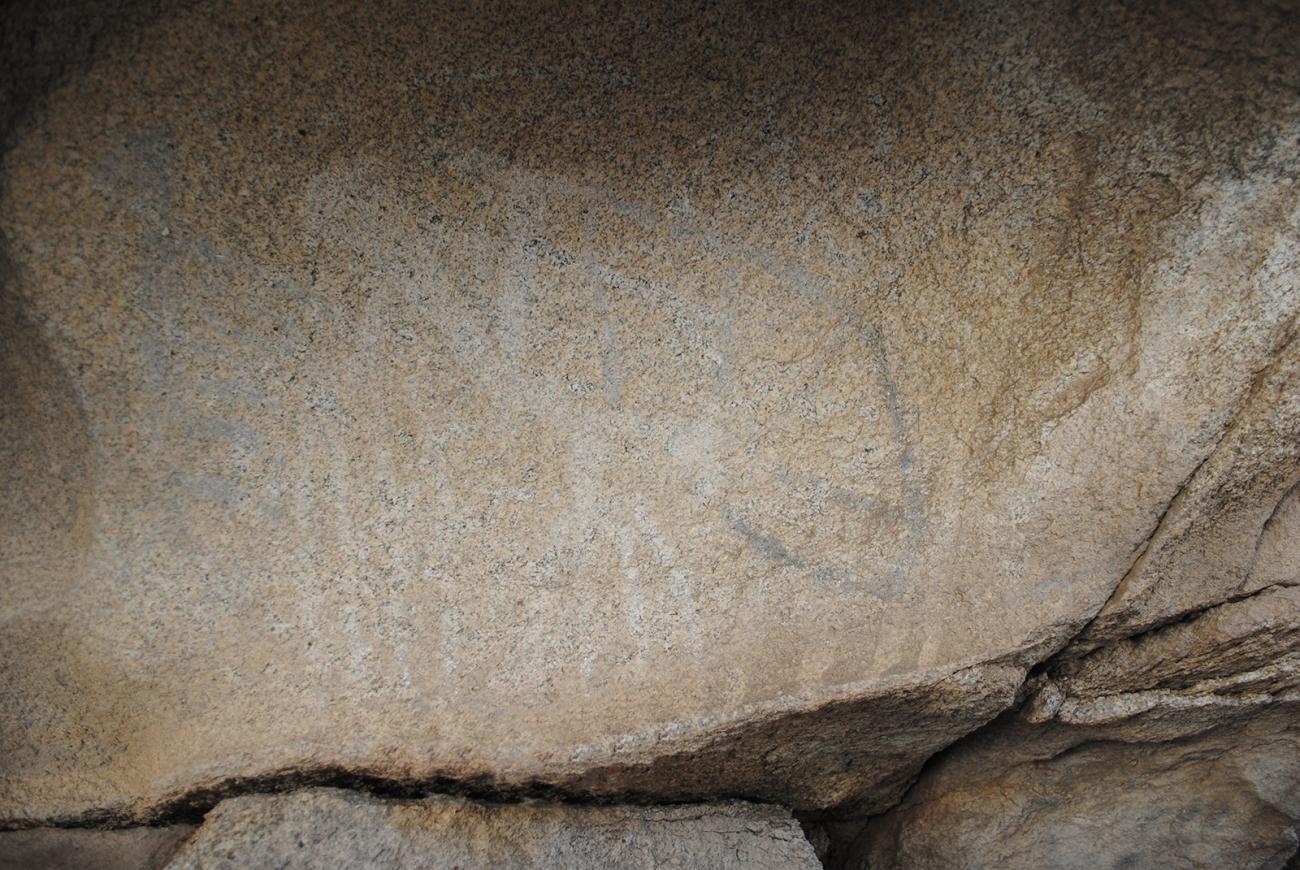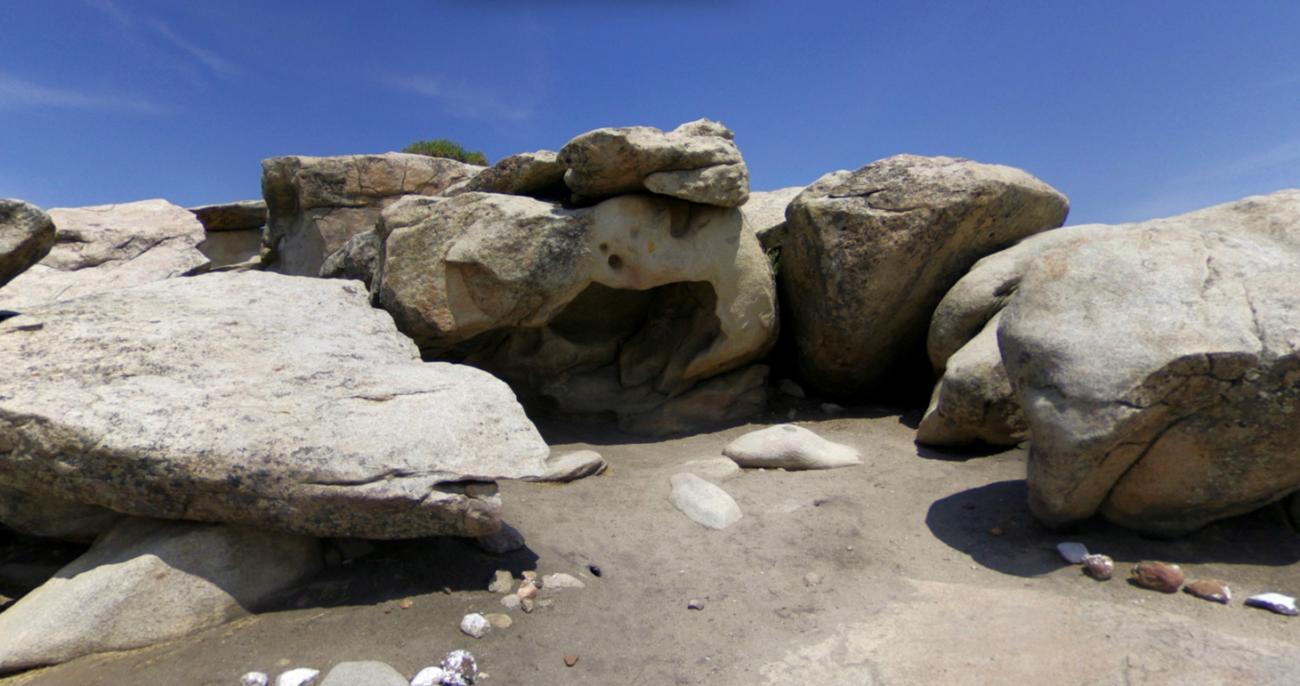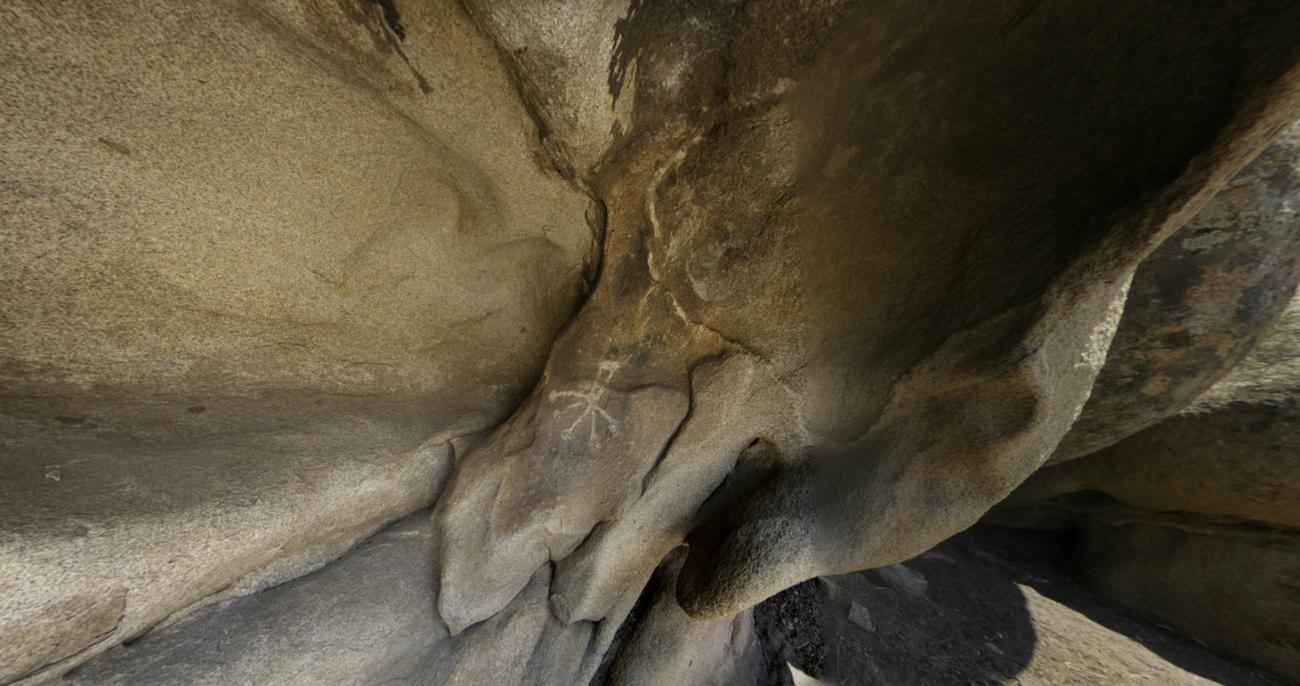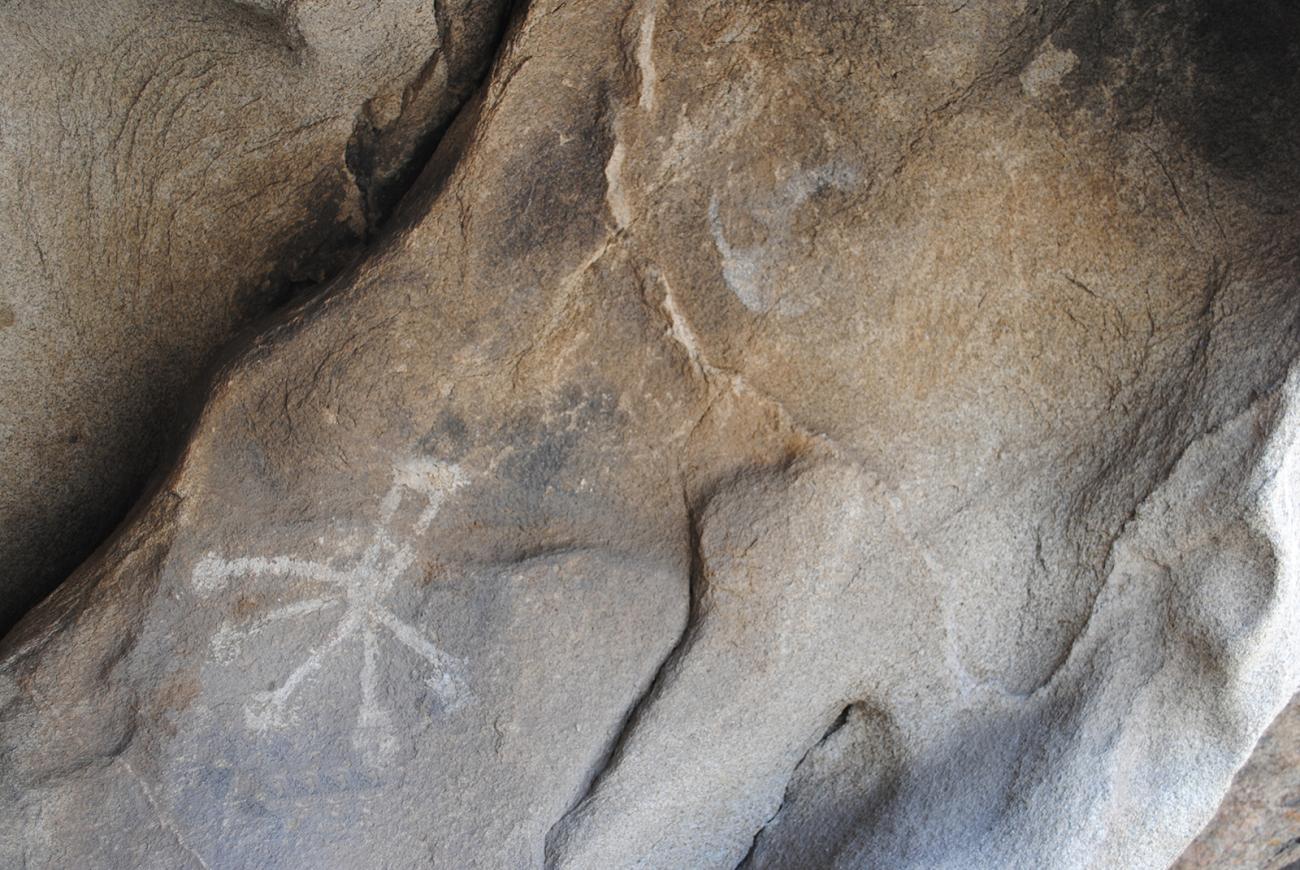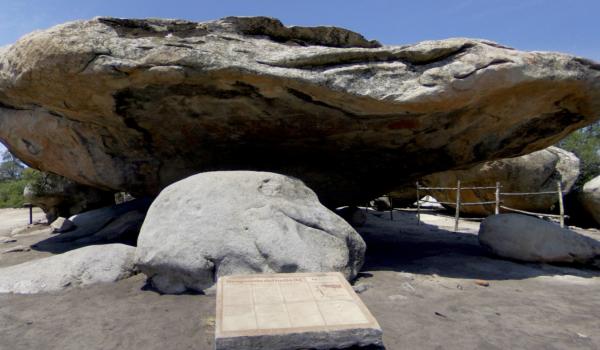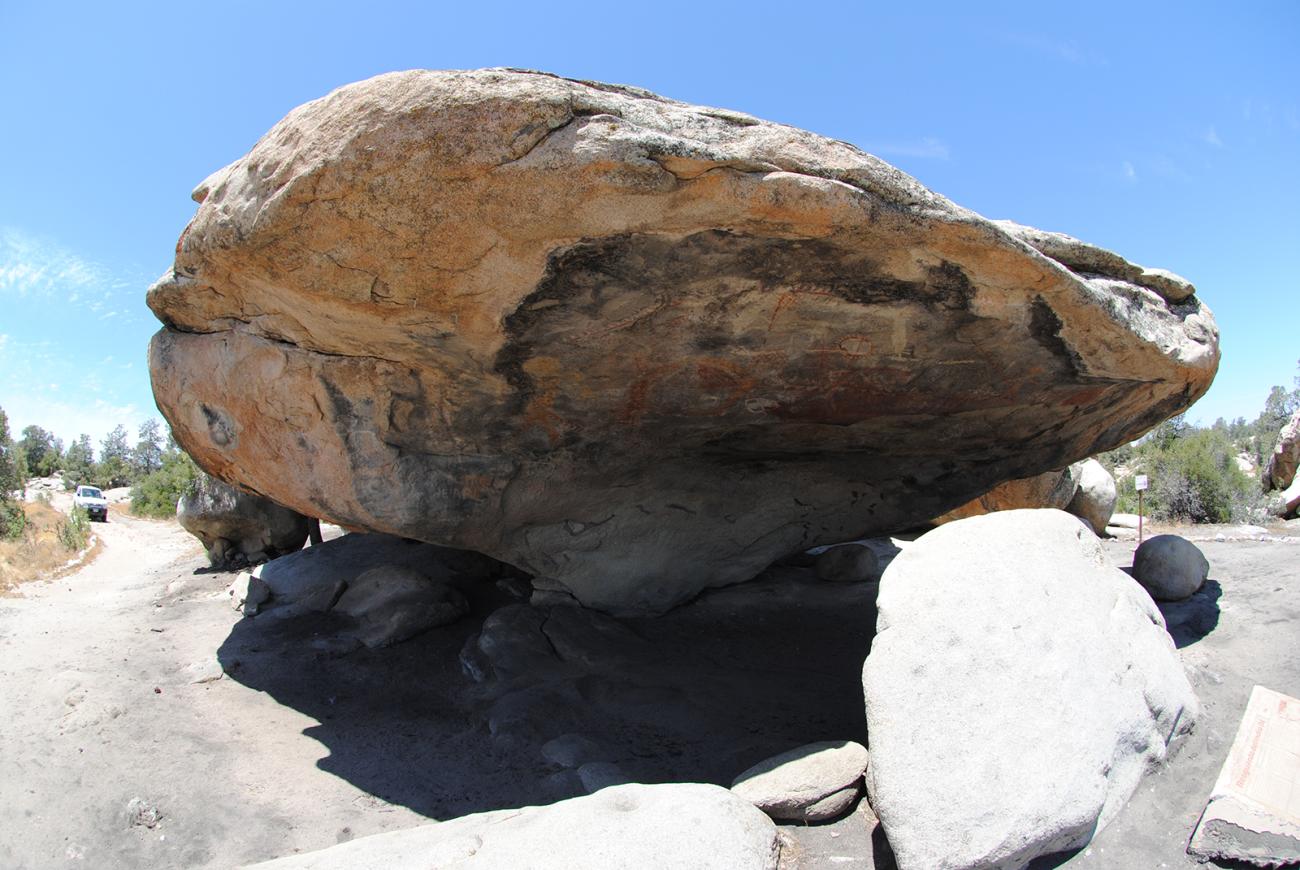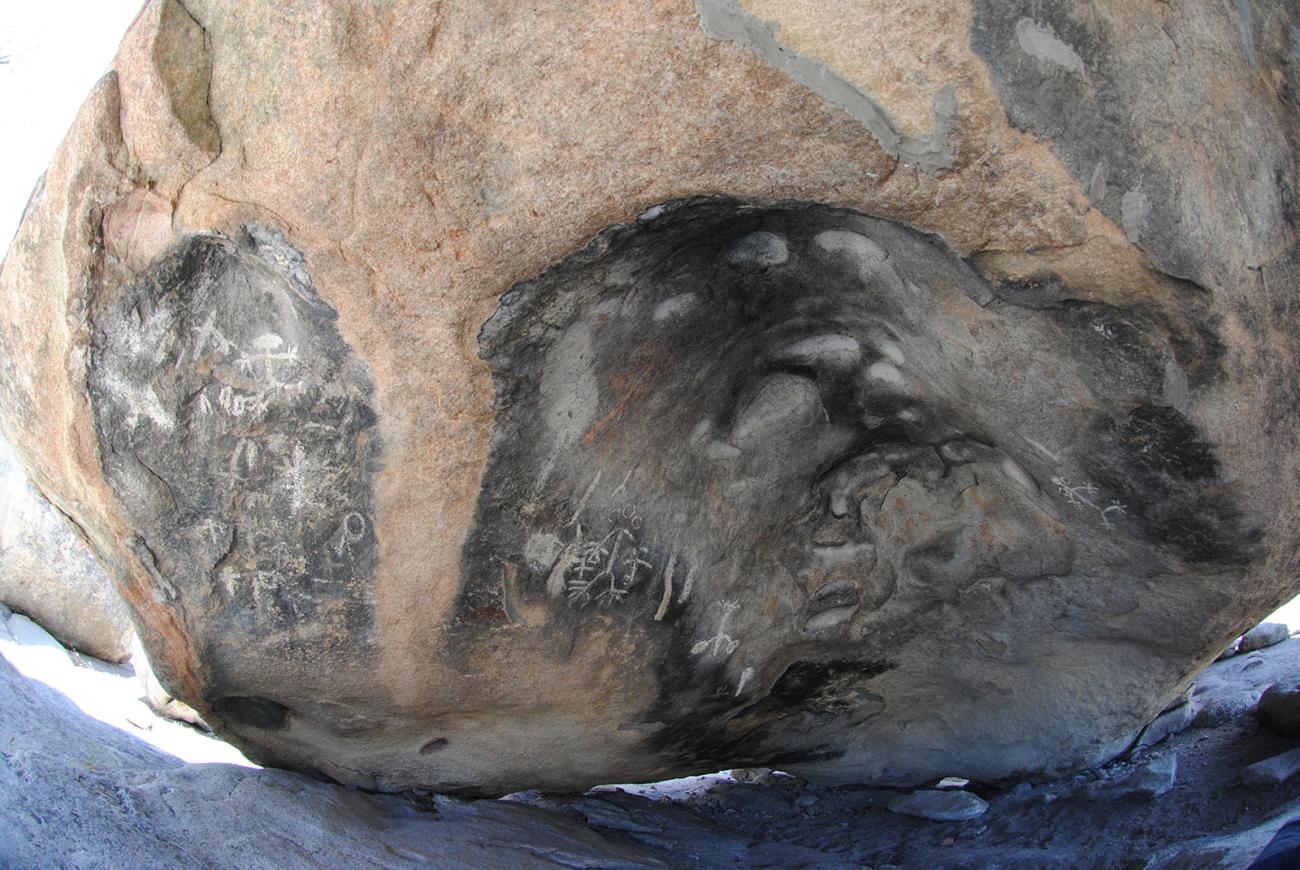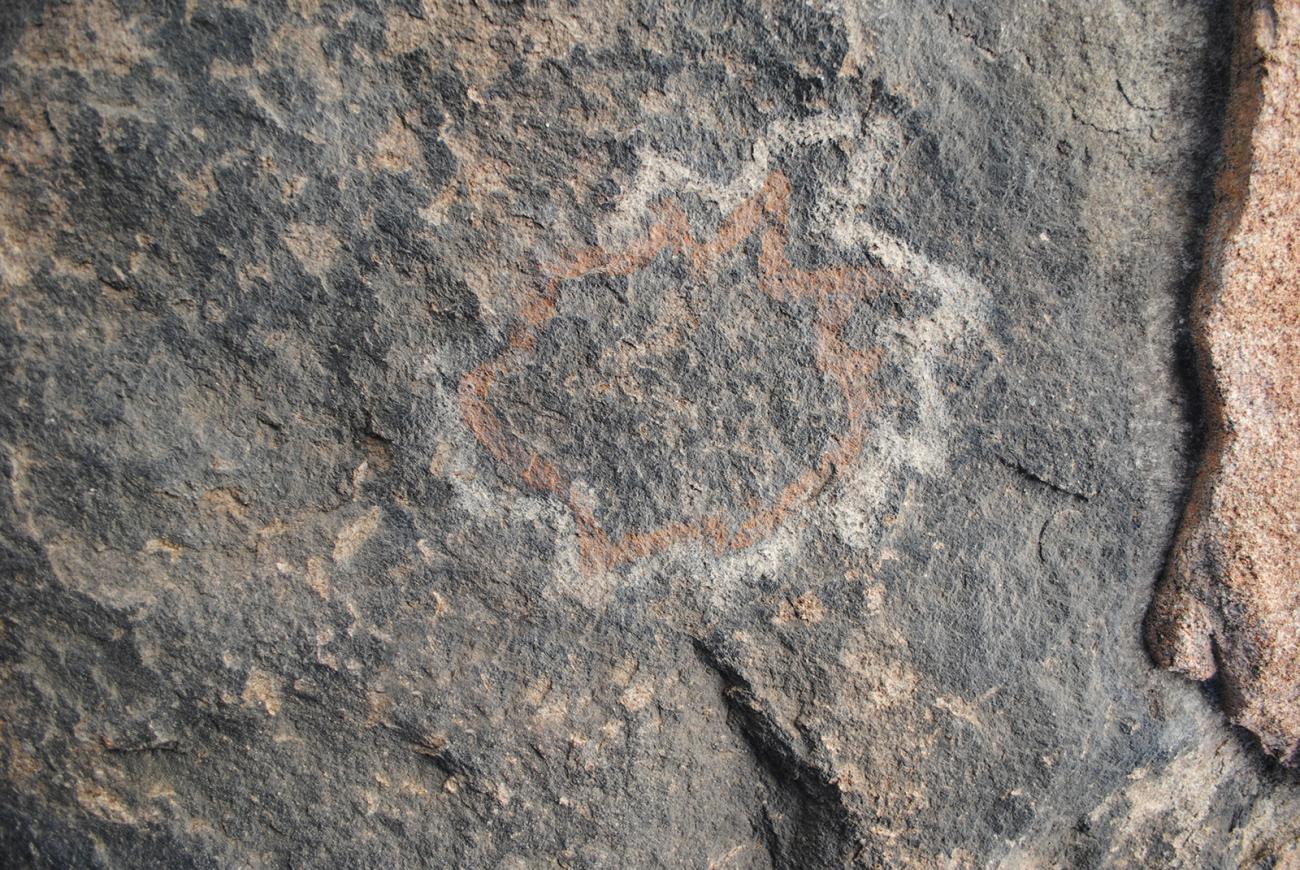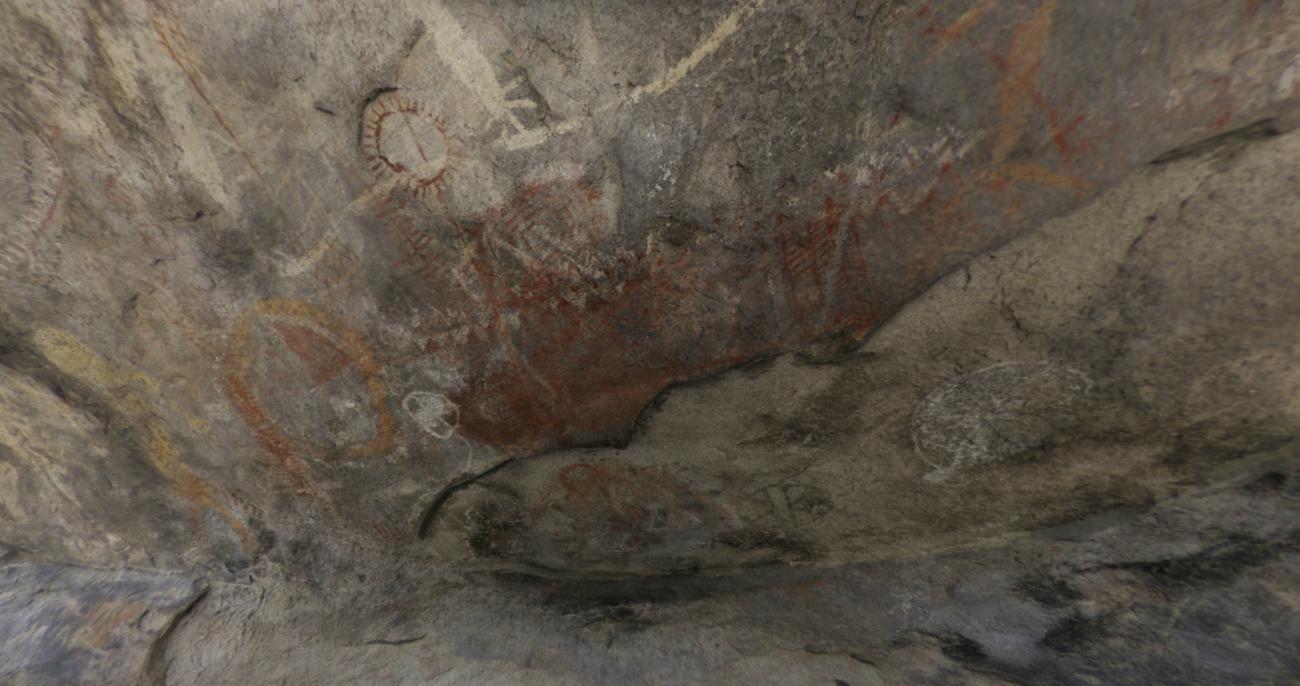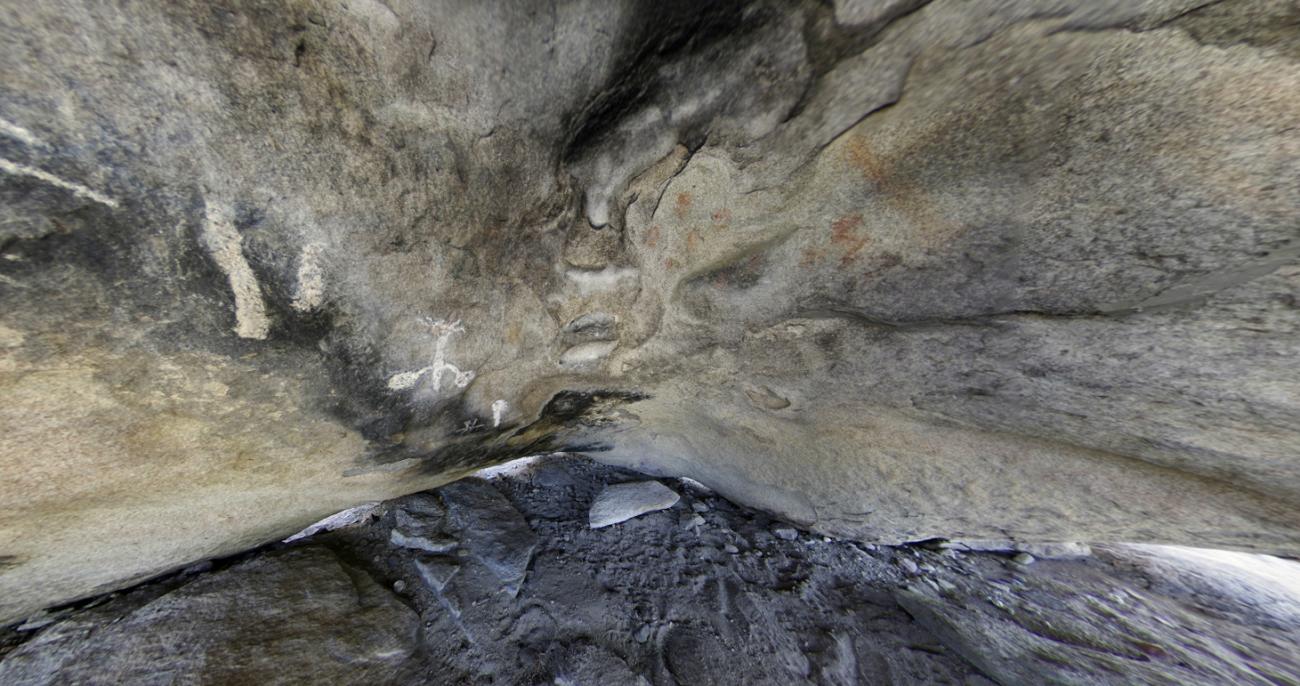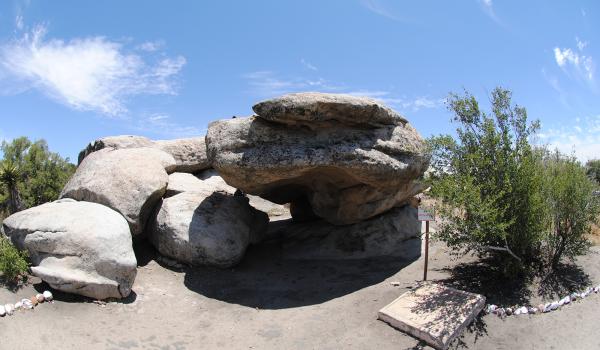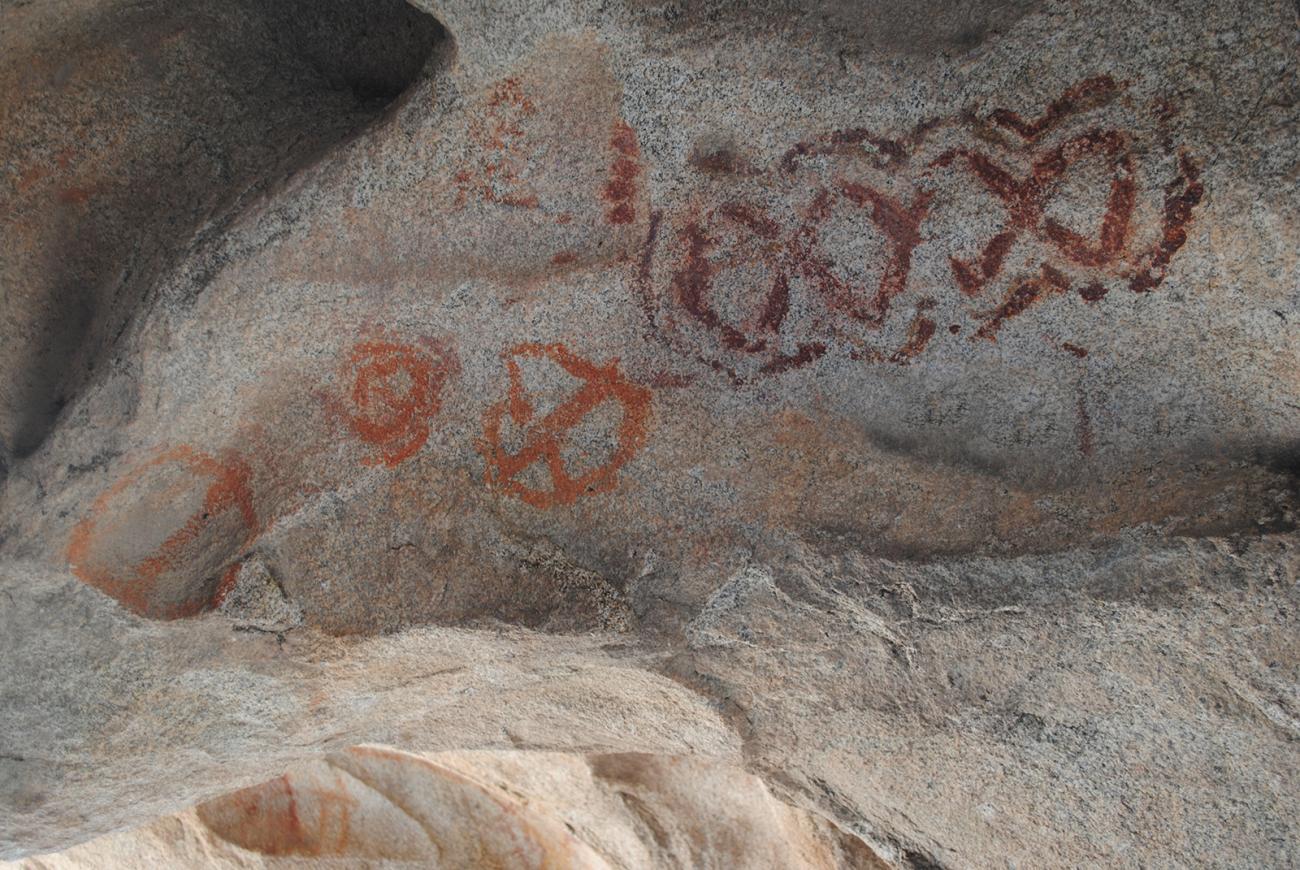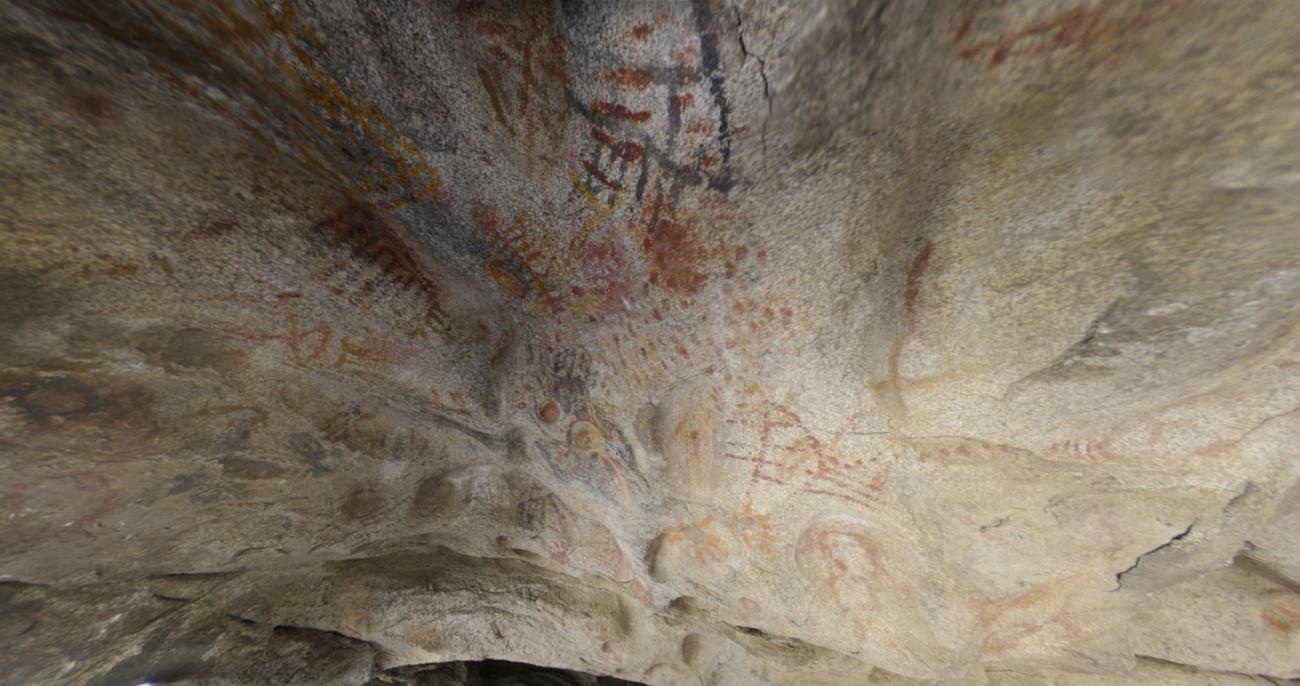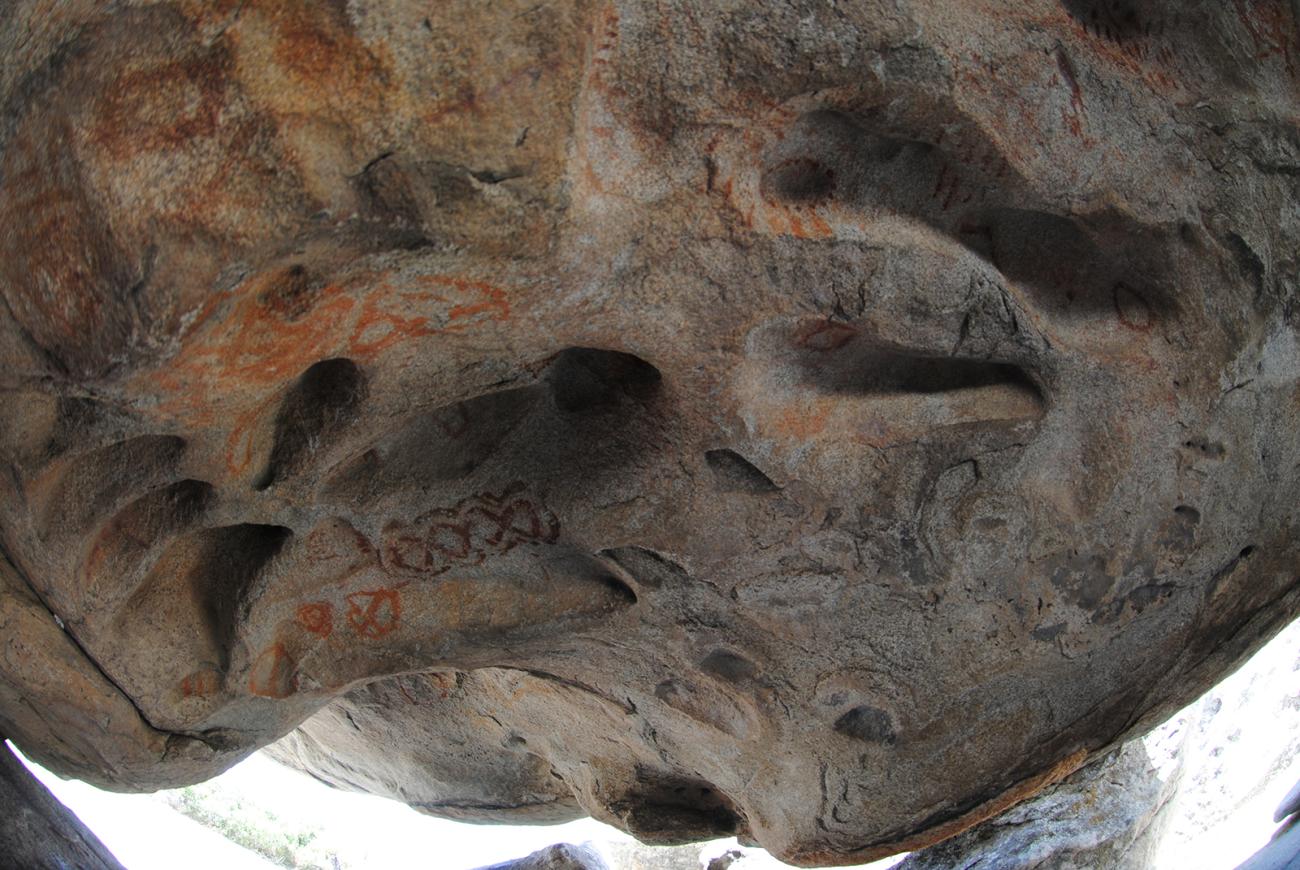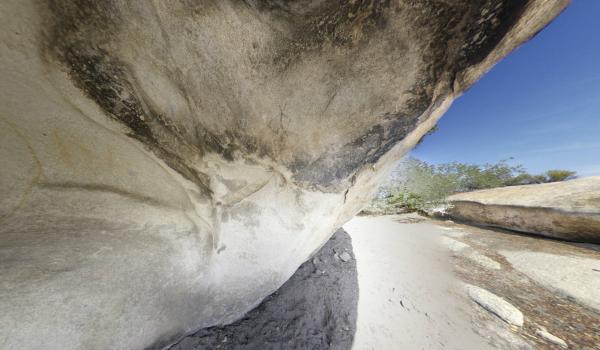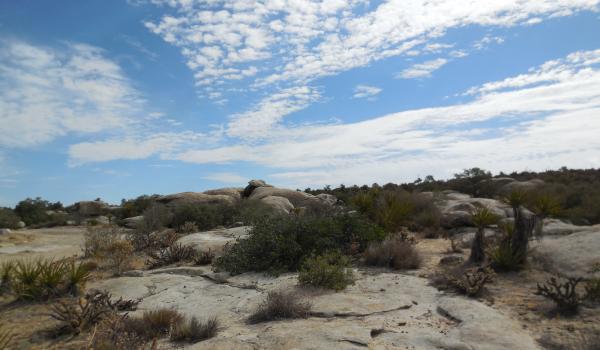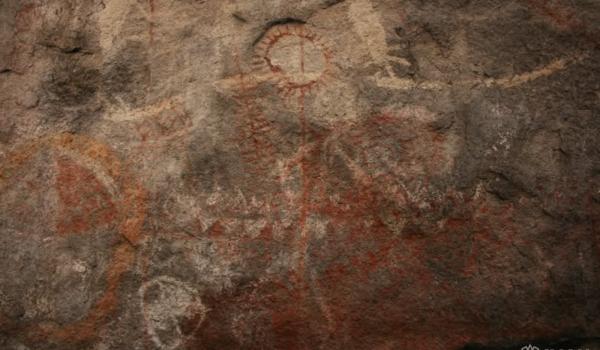The El Vallecito (“The Little Valley”) archeological site has caught the attention and awoken the interest of generations of ordinary people and researchers, who have visited it since at least the early twentieth century. It is the most northerly site that is open to the public in Mexico. Comprising 23 sites in total, it is famous for the cave paintings in the five rocky shelters that can be visited today, known as El Tiburón (“The Shark”), El Diablito (“The Little Devil”), El Hombre Enraizado (“The Rooted Man”), La Cueva del Indio (“The Indian’s Cave”) and Solecitos (“Little Suns”).
It was during the 1960s and 1970s that archeologist Ken Hedges, from the San Diego Museum of Man, California, introduced the scientific community and the world to the archaeo-astronomical phenomenon which occurs at the El Diablito site every December 21, during the winter solstice. When the sun emerges over the horizon, light pours into the cave and, minute by minute, clearly illuminates the pictorial motifs which are found there, finally converging in the center of El Diablito. Subsequently, the beams recede in almost the same way they came in, until the direct sunlight disappears almost an hour and a half after it began.
Given this background, other sites with cave paintings in the area began to be monitored from 2013, when the El Vallecito Archeological Project began, in order to determine if the El Diablito phenomenon only occurred there. However, for this task, it was important to first specify what an archaeo-astronomical site is. According to the archeologist Antonio Porcayo, it was defined as “a rocky cave or shelter with displays of cave paintings, where the equinoctial and solstice events are reflected at a certain time of day directly by sunlight, and indirectly by the play of the resulting shadows. This allows us to assume that this association (paintings and sunlight) was a result of a deliberate decision by their creators with unquestionable knowledge of the solar cycle, for different ritual, religious or other purposes. An archeological site with cave paintings which does not meet these conditions is not an archaeo-astronomical site.”
Therefore, since 2014, the archeologist José Aguilar from San Diego City College, a contributor on archaeo-astronomical observations to the El Vallecito Archeological Project, has come to monitor the solar event that marks the change of each season at the site named El Hombre en el Cuadro (“The Man in the Painting”). Although it is not yet open to the public, it has already been proven that, like El Diablito, it is an archaeo-astronomical site as the winter solstice and autumn equinox events are reflected directly, and the spring equinox indirectly.
Research continues in El Vallecito and it is very probable that, besides El Diablito and El Hombre en el Cuadro, some of the other 23 sites which display cave art will also be shown to have an astronomical connection.




